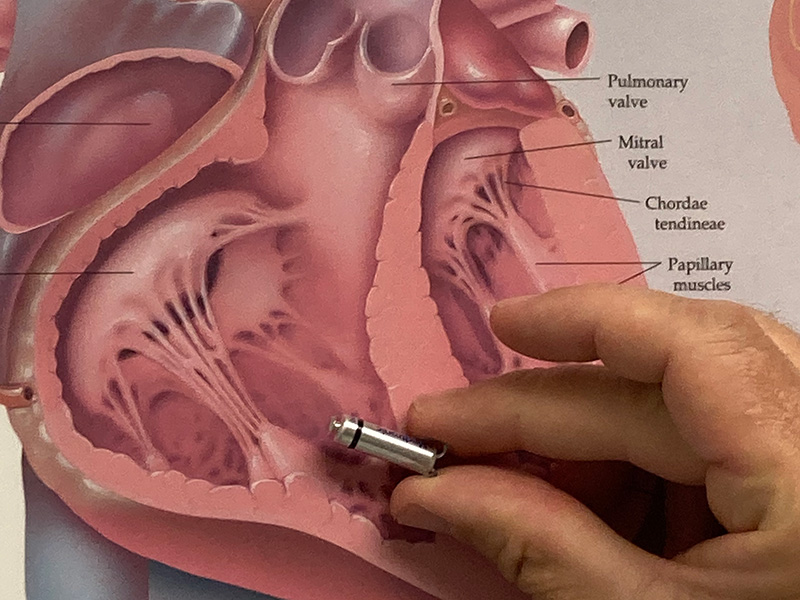Julie Pogue was celebrating her 50th birthday by taking her family from Missouri to the Badlands of North Dakota in June 2021.
After a long day out in Theodore Roosevelt National Park, she was playing cards with her husband in the hotel room when everything went blank.
Track your heart health: Heart screenings at Sanford Health
“We were playing games and the last thing I remembered was that my husband won the Uno game,” she said. “I could tell you exactly the cards I had in my hand, and I set them down on the table, and that is the last thing I remember.”
Heart had slowed down
Noticing something was wrong, Julie’s husband, Corey Pogue, called 911. She had passed out, needed CPR and was transported by ambulance to the Dickinson emergency room.
“Heart block to the degree that she had was unusual,” said Sanford Health cardiovascular surgeon Timothy Pansegrau, M.D. “Usually when your heart slows down you might feel dizzy, you might feel lightheaded, but to require CPR is pretty unusual.”
Julie was given an external pacemaker and flown overnight to the Sanford Medical Center – Bismarck, where they diagnosed in greater detail the problem with her heart’s electrical system. She was in an irregular rhythm.
After consulting with Dr. Pansegrau, Julie agreed to go through the procedure that would change her life.
“Last year I had heart failure … but ever since I got the (Micra AV) pacemaker, I’ve felt better than ever,” said Julie. “I feel like I have a second chance at life and I’m very grateful because I want to be there for my kids.”
Micra leadless pacemaker difference
Sanford Bismarck Medical Center is now offering the Micra AV, the world’s smallest pacemaker with atrioventricular (AV) synchrony.
Approved by the U.S. Food and Drug Administration in January 2020, the Micra AV pacemaker is inserted through a catheter and implanted directly into the heart with small tines to treat patients with an AV block, a type of heart block in which the electrical signals between the chambers of the heart are impaired.
Historically, patients with AV block have been treated with traditional dual-chamber pacemakers which are implanted in the upper chest, under the skin below the collar bone, and connected to the heart using thin wires called “leads.”
Because Micra AV does not require leads or a surgical “pocket” under the skin, potential sources of complications related to leads and pockets are eliminated — as are any visible signs of the device.
Comparable in size to a large vitamin, Micra AV has several additional internal atrial sensing algorithms which detect cardiac movement, allowing the device to adjust pacing in the ventricle to coordinate with the atrium, providing “AV synchronous” pacing therapy to patients with AV block.
Pacemakers help restore the heart’s normal rhythm and relieve symptoms by coordinating the electrical activity of the atria and the ventricles. When AV synchrony is achieved, patients are healthier, have improved quality of life and increased blood flow from the left ventricle. Pacemaker batteries should be changed every 8-12 years.
Learn more
- Compassion of cath lab nurse helps patients feel at home
- Doctor and heart disease survivor leads annual heart walk
- Heart attack survivor almost missed the warning signs
…
Posted In Bismarck, Emergency Medicine, Heart
